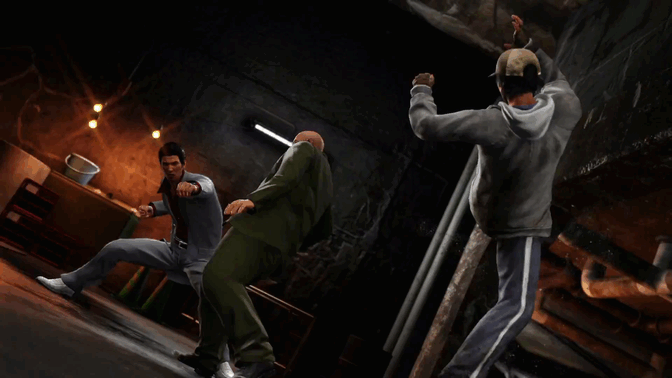The last few months of my stream have mainly moved away from anything competitive; I’ve been playing games that I’ve been meaning to cross off my list for one reason or another, and the idea (like many people will tell you) is to play while focusing on my enjoyment.
However, after a little bit of experimentation I wanted to write about how game type does matter to an extent on the beginning stages of a Twitch channel, and how my choice of titles haven’t been amazing for onboarding new viewers.
I want to caution before I start, though, that this isn’t meant to be a complaint post. I’m not whining that I didn’t turn into a Twitch sensation overnight. I mainly wanted to take a step back and look at what makes some games more suited to growth than others, and when certain titles can be introduced, if at all.
I’ll just come out and say it: story-heavy games are pretty shitty for getting new people onto your channel. This isn’t exactly rocket science, and it’s something a lot of people know. However, I think it’s valuable to look at exactly why.
Story requires context
Context is king, and if the viewer has no idea what they’re going to expect when they come into a stream, they’re likely not going to stick around for long, or become a repeat visitor.
I tried to remedy this by typing out my own (shortened) summaries for the games I was playing, but I’m not exactly surprised they weren’t used much: that catch-up is work, and as a rule of thumb, only invested viewers want to do that.
These summaries aren’t even that effective, mostly because if they’re not there for the entirety of your stream, they’re going to miss something. Even with generous notice people can’t always make that start time, and by promising a confusing experience you’ve given them more reason not to show up.
You need to give reason for people to do work. And that can be difficult.
Personal experiences
The two games I was working through, Yakuza 5 and Persona 5, are both games that require a lot of selling to a viewer.
The former is a plot-heavy beat-em-up that shifts between multiple points of view and different characters as a large crime story unfolds. The latter is a long JRPG that rewards people who tinker with builds and spend time on side social quests to develop relationships.
Both probably require 5 minutes or more of explanation to someone who’s never heard of them before. In this time you’re likely going to lose someone, or annoy them when you might have to repeat yourself 10 minutes later to someone new.

While I wanted to stream these games because they were on my backlog (primarily to clear up room for the three Yakuza games I need to play on the PS4 later this year), I realized that I liked them better as personal and private experiences.
I find this happens more with games that either involve sidequests or at the very least romances — I don’t think I’m comfortable enough in front of a live audience to appreciate the fantasy of a building that relationship. I also tend to mash through a lot of text that I can either skim through or don’t care about, and this is kind of useless for a person wanting to experience the game for themselves; when I’m bored by something I feel like I’m wasting someone’s time who wants to see it.
So fundamentally, they are not a good fit. Ironically, the things that have worked best for these kind of streams are the parts of Yakuza 5 that have nothing to do with the game at all: the various mini-games that SEGA have put an absurd amount of work into (like karaoke, with the original voice actors singing… both well and terribly) were the things that people really enjoyed.
It’s the absurdity of the situation and kind of marveling at what SEGA was bored enough to program. However, that’s just a novelty.
Building investment
I’m sure you’ve seen streamers that are able to play heavy story games and still remain successful; this is because for a lot of the viewers coming in, they’ve already been sold on the experience of the person playing that game.
This is kind of Twitch 101: by playing their cards right, streamers will hopefully build a community around seeing how they play a game, instead of just seeing it played. Again, this comes after that initial sale.
What gets people in the door initially is usually:
- An experience that changes daily and has a renewable set of objectives (multiplayer games)
- An experience that they cannot easily attain (speedrunners, pro players)
- An experience that allows the streamer ample time to interact and involve the audience (roguelikes, or calm-casual games like The Sims)
- An experience they do not want to try to replicate themselves
I found this last one especially a problem when I was trying to play Persona 5. Since the game is so new still, the people who are excited about the game are still in the “playing or wanting to play it” stage; the game has not yet reached a cult status of Persona 3 or 4, where a sense of nostalgia for a game they loved in the past might interest them.

Since the story is a chief feature of the series and twists are expected, spoilers kill the game for people — they’d rather not take the chance. This also means that if they don’t care enough to dodge spoilers, it’s unlikely they’ll want to watch the game itself in the first place.
From that remainder, you’re looking at audience who want to see other people play the game to see what choices they would make. However, the way the game is structured can make that curiosity easily distracted; Persona 5 requires either following a precise walkthrough to experience it all in one go, or multiple 40-hour-plus playthroughs to get to everything. Since I’m doing the former on the easiest difficulty (called “Safe” for a reason) to get through the game for the plot, there’s no stakes, and things are formulaic.
If you don’t have people invested in you, stakes are what get people interested. A personal best, a pro play or the potential for massive failure keep people somewhere they might tune out of otherwise.
So yeah, you can have people take a break from what they usually do and play something insanely deep or long-winded like The Witcher 3; by then, people know what they’re getting into and enjoy the person playing, they will make time to experience it along with the streamer.
I noticed this first with Iateyourp1e’s playthroughs of the Phoenix Wright visual novel games: they are very dense games when it comes to plot, but people wanted to see him play them so much that they stuck around, looked forward to “lawyer nights” and, if they really wanted to catch up, could watch at VODs.
This did not keep him, however, from playing the games he usually did. He kept delivering an experience that would satisfy old viewers who weren’t interested in the shift in game and onboard new people.
“Just for me”
I realized that the longer I played these games on stream, the farther away I was from getting through them, and the less I enjoyed them.
Because I wanted to make sure people who were watching me were having a good time, I didn’t play them at all off-stream. Since I didn’t want to explain the jumps in plot or progress, I ended up only playing once or twice a week, which meant a very slow pace.
I also found myself skipping parts of Yakuza 5 that I otherwise would pour hours into, mostly because I thought sticking to the main plot gave the stream purpose. Things that I would normally be really happy to push through with a stream or video in another monitor felt annoying, because I couldn’t do those things while broadcasting.
At the end of the day, though, I wasn’t really having as much fun as I usually did with these games; I felt like I was rushing, or I was easily distracted.
With Persona, I realized that I’d rather keep the game to myself and be able to fully invest myself in a story I was interested in. The game feels well, personal for a number of reasons, and something felt a little weird about experiencing something that made me feel vulnerable with people watching. I wanted that vulnerable experience alone more than I did with other people, and I think that’s okay to admit.
I don’t believe every game needs to be shared with someone — if the goal is to chase happiness, I’ve become increasingly okay with becoming selfish with things that work for me. If it means that I’m pushing away from the routine I’ve built for myself streaming lately, that’s fine — it means there’s more tinkering to do, and it’s part of the journey of finding out how to grow while also getting what you want without compromise.
I guess coming to that decision was a bit of a hard moment, mostly because you end up thinking “okay, well, if I don’t have this, what do I have to offer?”
That question is a difficult one, and perhaps left for some other time.

Leave a Reply